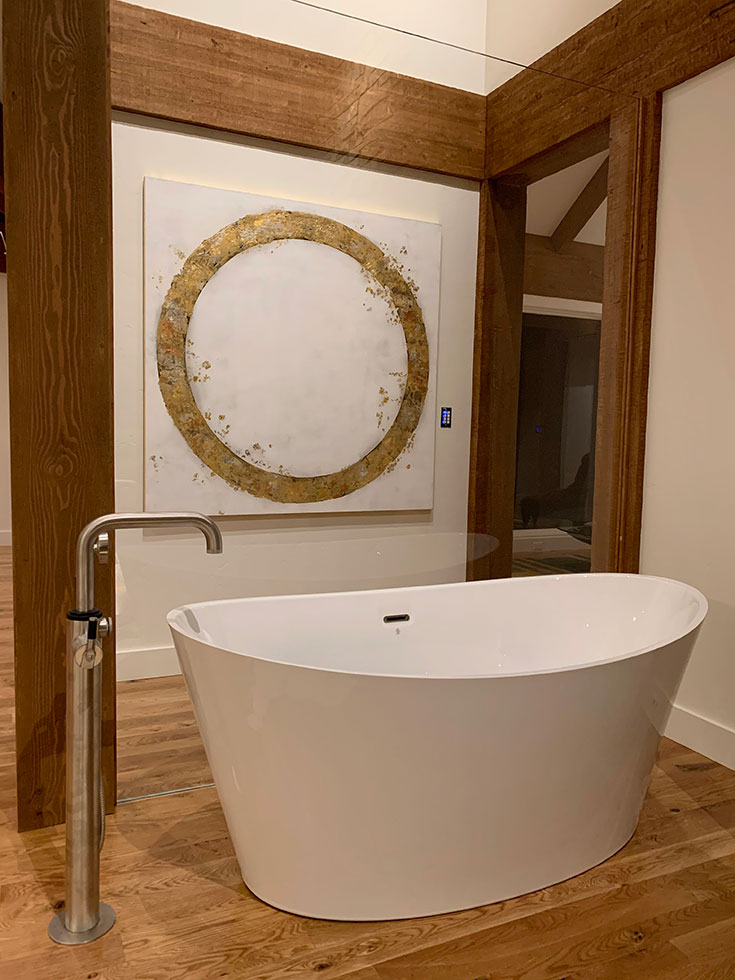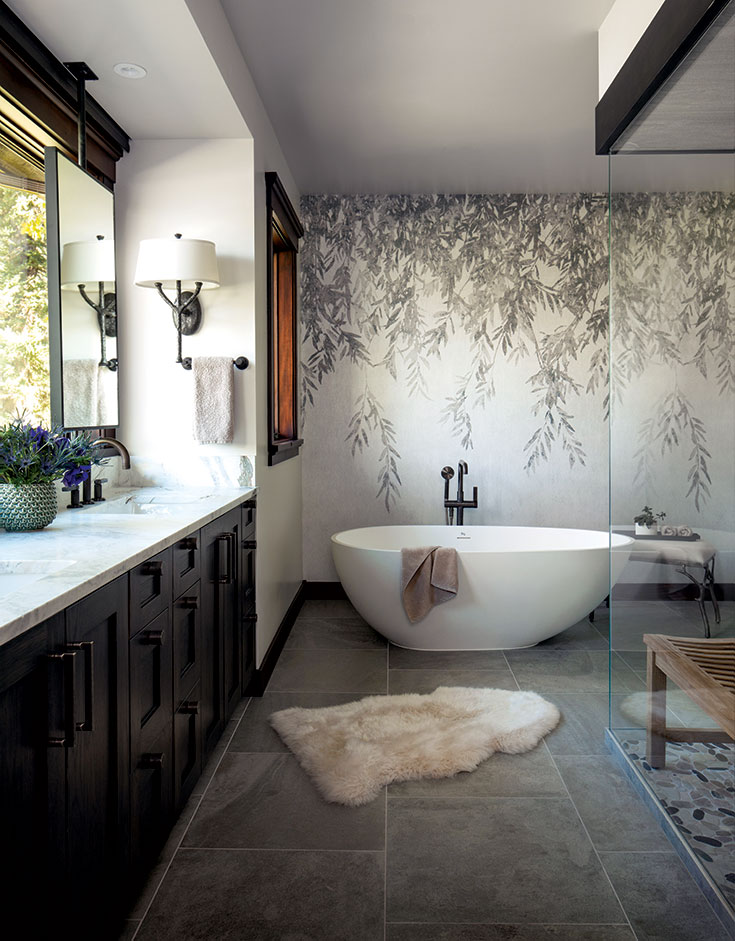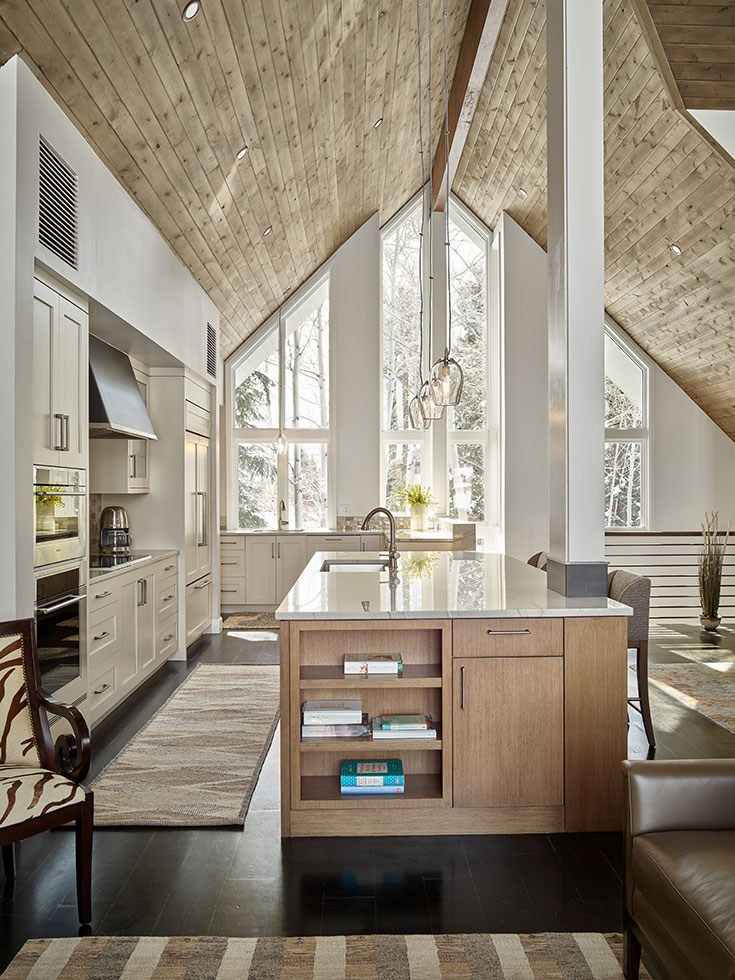ART BRINGS LIFE TO A HOME, AND IT CAN IMPROVE YOUR MENTAL AND PHYSICAL HEALTH.
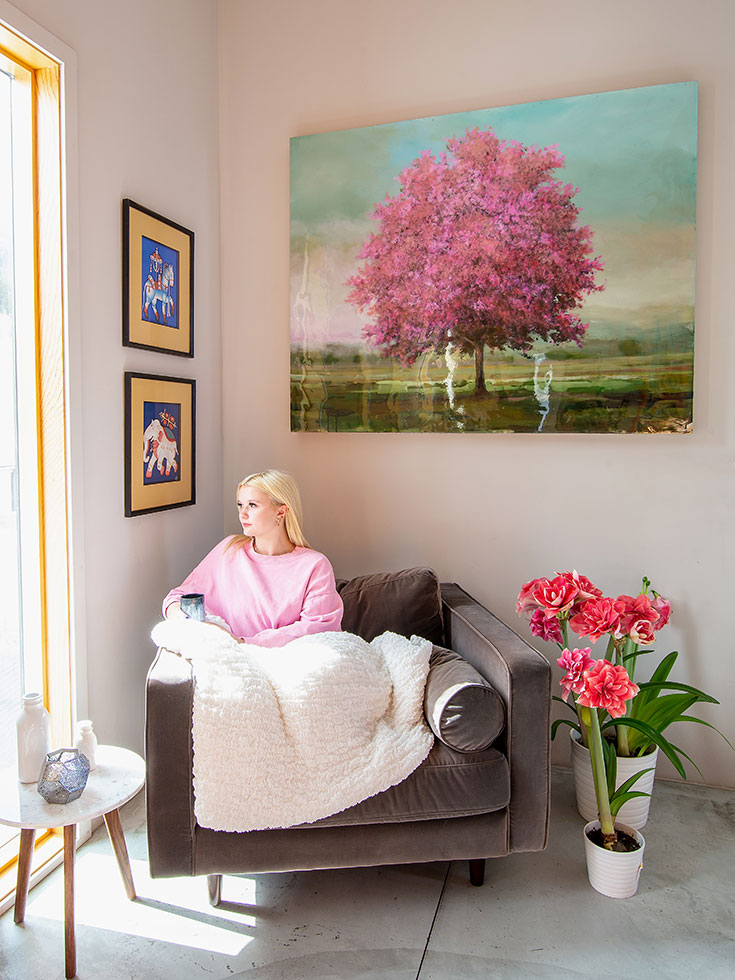
Story
DINA MISHEV
Collect what you love, not just what matches the drapes and the sofa.
— Mariam Diehl, founder and owner of Diehl Gallery
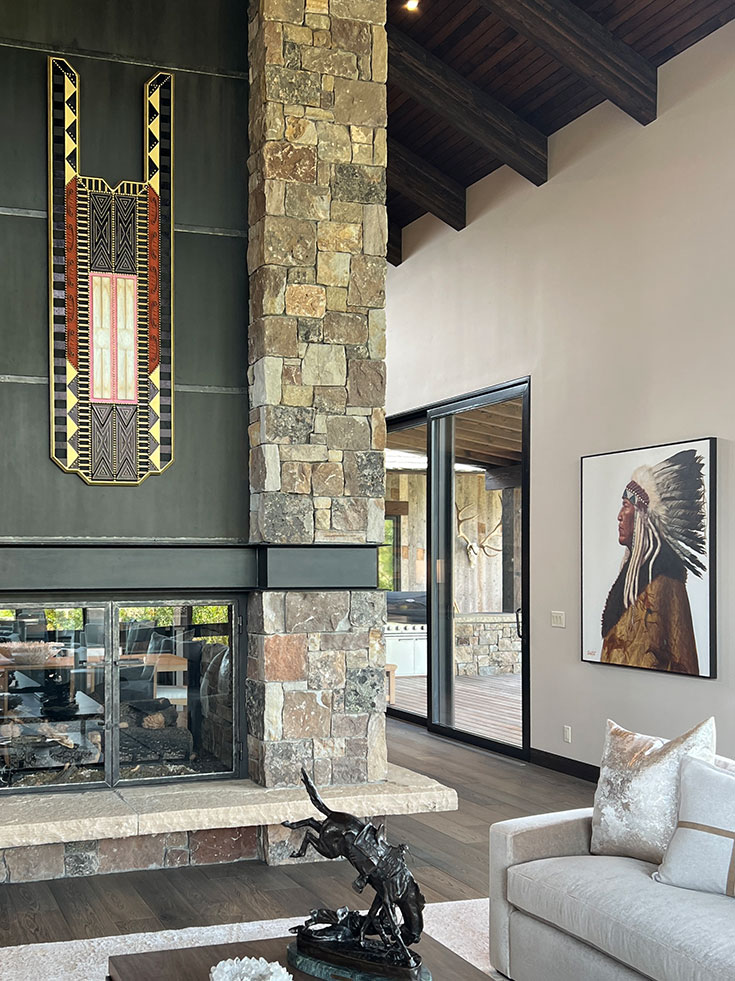
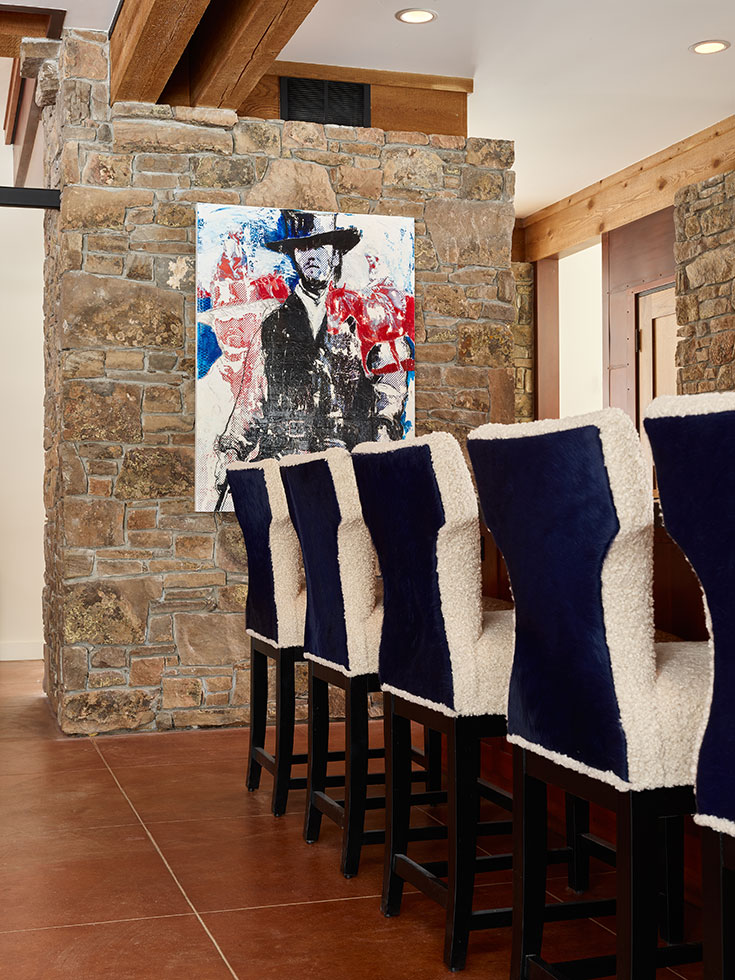
ART BRINGS SOUL
Homeowners who worked with art advisor Shari Brownfield, founder of Shari Brownfield Fine Art, to fill the many walls in their Jackson Hole home (the couple also has a home on the East Coast), share, “It’s our house here that feels the most like home to us, and that’s in large part because of the art.” Binger, whose use of color and texture I’ve long admired, wasn’t surprised when I told her this. “Art creates a soul for your home,” she says. “It is art which brings the walls alive.” The homeowners Brownfield helped say, “Depending on the room we walk into, the art gives us a different feeling—sometimes warm, other times a pop of color in a painting feels invigorating. It makes the house feel alive.
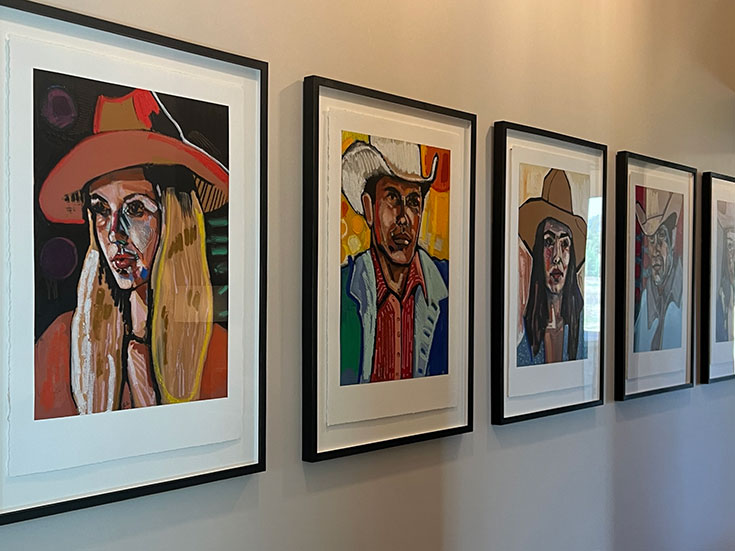
COLLECT WHAT YOU LOVE
“If you find something that inspires you and ignites emotion when you engage with it—that’s the piece which is best to live with you in your home,” says Binger, who founded the boutique design studio Dwelling in 2006. Mariam Diehl, the founder and owner of Diehl Gallery, which happens to represent May Blossom’s artist, Peter Hoffer, says, “The biggest thing I say to clients is to collect what you love. It should be a visceral feeling that you get in your chest when you look at a piece.”
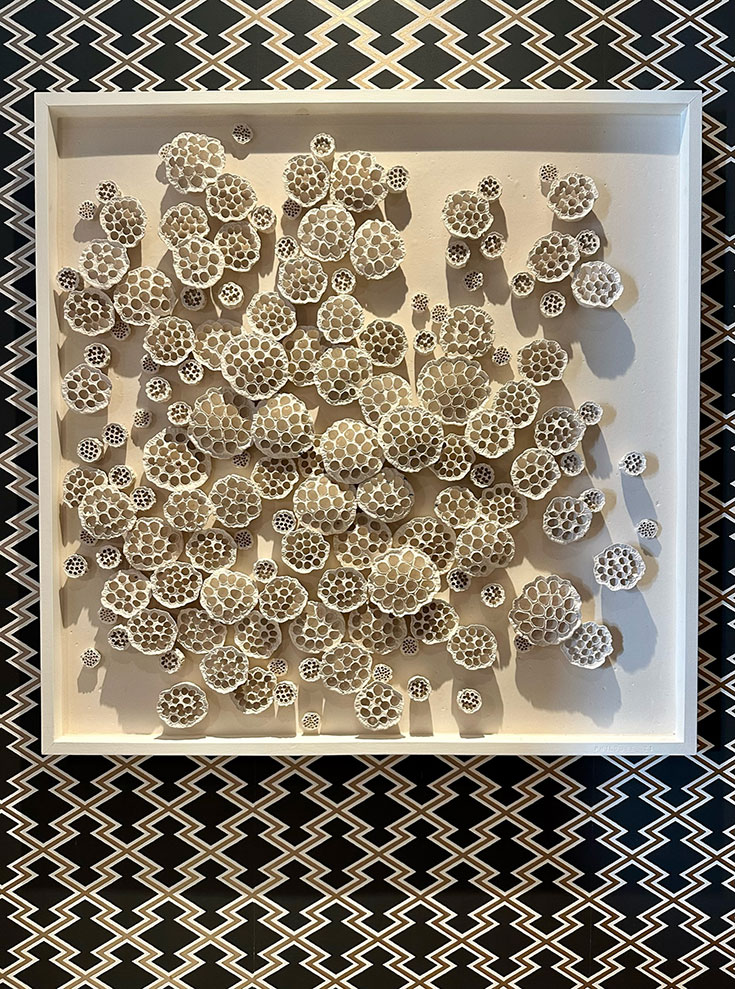
When the homeowners mentioned on the prior page first reached out to Brownfield, they had already purchased about six pieces on their own. “We just bought what we loved, but then we got stuck and we still had a lot of empty wall space we wanted to fill,” they say. A neighbor recommended Brownfield, who herself enjoys collecting female abstract expressionists and work by self-taught artists. “Shari made filling our walls the easiest thing we’ve ever done with a home,” they say. “It was seamless; she took the pieces we had, listened to what we liked, and managed to fill our home with art we love that we never would have found on our own, which kind of makes us love it even more.
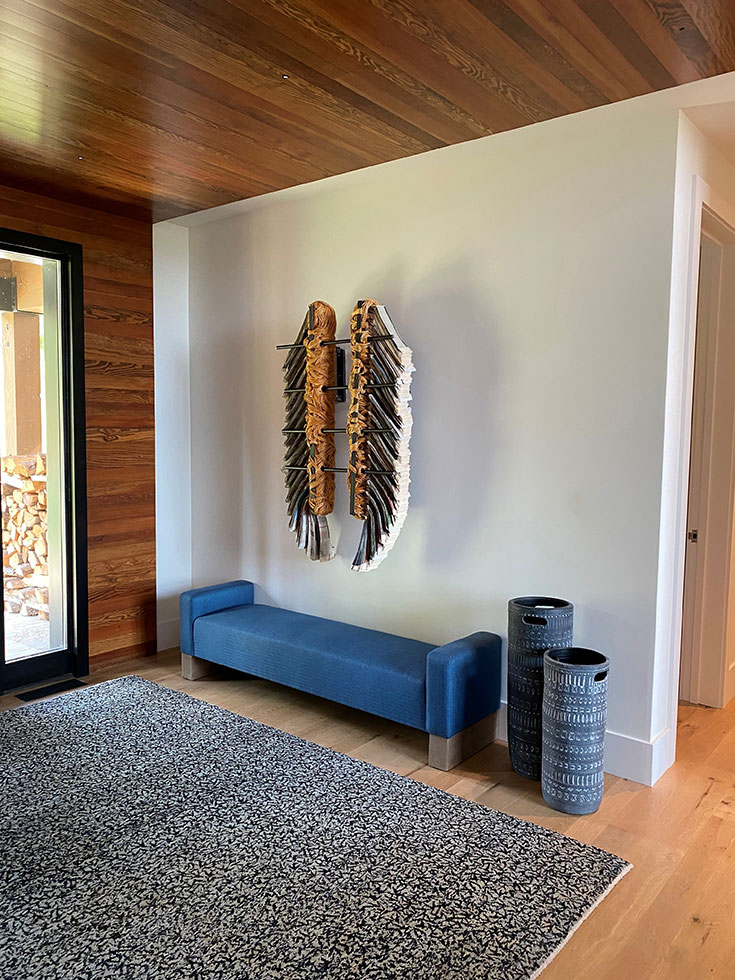
MIX IT UP
“I work with a variety of clients—from very serious collectors to those who don’t consider themselves collectors at all but love the depth that art brings to their lives and want to live among beautiful objects and others who simply want an aesthetically pleasing space without much interest in the storytelling that art provides,” Brownfield says. Most people fall solidly into the last category, which means that the beautiful things they live among can be quite varied. While this might seem “wrong”—isn’t everything supposed to go together?—it’s not. “It is fun to see traditional pieces married together with more contemporary work,” Diehl says. “At one client’s home, we hung an antique Navajo rug on a wall in the great room, and on the opposite wall is a contemporary painting. It looks fantastic, and, to me, makes the home more interesting.” Binger says that her goal as an interior designer is to “move past having spaces always look perfect, like staged photos in a magazine. Perfect is boring. Life is far from perfect. I’m fond of art—and homes—being inspiring, interesting, and as transitional as our day-to-day-world. It returns to art giving a home soul.” The homeowner with the antique Navajo rug hanging opposite a contemporary painting purposefully mixes styles. “To me, that creates a feeling of a home lived in as opposed to just a home with a gorgeous art collection,” she says.
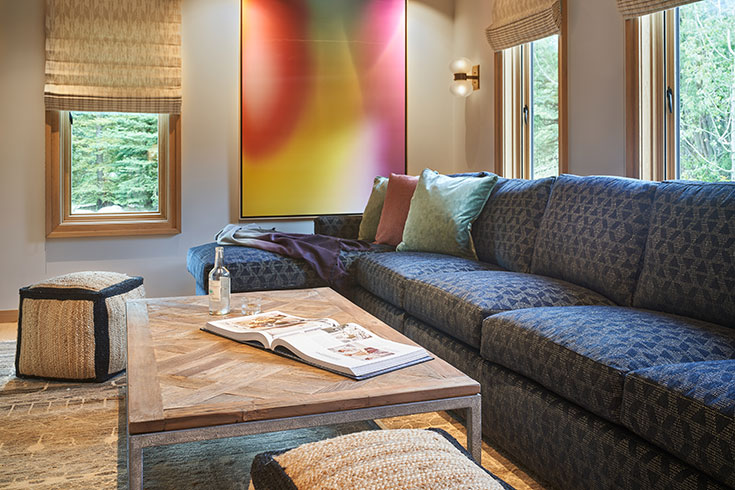
Our Peter Hoffer painting hangs down the hall from a powder room, in which hangs artist James C. Strouse’s Superheroes on the Toilet series of line drawings, and around the corner from a miniature watercolor by local artist Travis Walker (find his larger works at Altamira Fine Art) of Darth Vader sitting by himself in a canoe in the middle of a lake. Also in our home are Western and Jackson Hole-specific pieces—a Jo Mora lithograph of Sweethearts of the Rodeo, which I first saw at Fighting Bear Antiques, and miniatures bought over the years at the Art Association’s annual fundraiser Whodunnit, a silent auction of small pieces the artists don’t sign the fronts of; you don’t know “whodunnit” unless you’re the winning bidder.
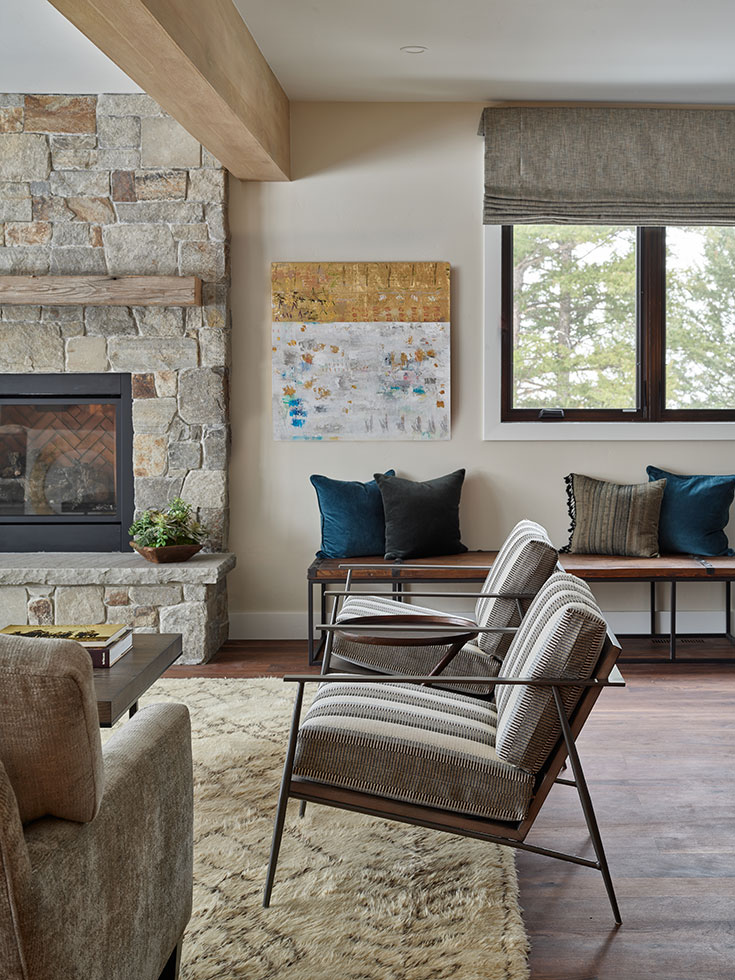
“I believe that if the art in a home comes from the instincts of the clients, then we can make it all work together,” Brownfield says. The Navajo rug owner says, “My mother once told me—and she was speaking about clothes, but I think it applies to art and furniture—not to worry if it will match with the rest of the things you have. If you like it, by default it will match. Knowingly or not, we gravitate toward similar things, even if we can’t identify the similarities.”
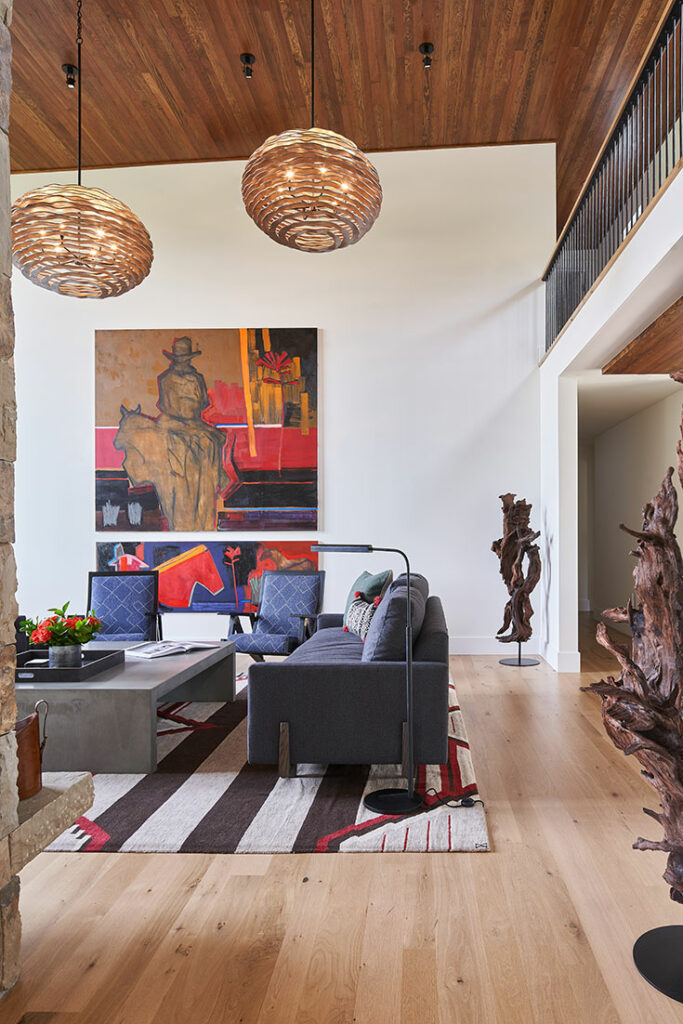
MOVE PIECES AROUND
After an artwork has hung on a certain wall for several years, it can become like a piece of furniture, and the original spark it made you feel may seem lost,” says Brownfield. “Changing art placement keeps the art living and makes the spirit and connection between you and it more dynamic.” She says she moves her own collection around so frequently “it’s like a game of Tetris.” (Brownfield admits this is easier for her than most because one of the bedrooms in her home is all art racks.) Binger, who does not have any rooms full of art racks, says she “constantly rearranges” her walls and bookshelves. “My art and objects are never stationary. They tell a story and are an entity I engage with in a different way every time I look at it.” Binger shares that she hangs art in her mudroom. “It’s a small space, and in a location that’s meant for function, but creating a small art space means so much to me. I take time to pause when I look at those two pieces. They create a moment for me to think about something other than the chaos of life, or work, or family situations, or whatever might be causing me stress and anxiety.”
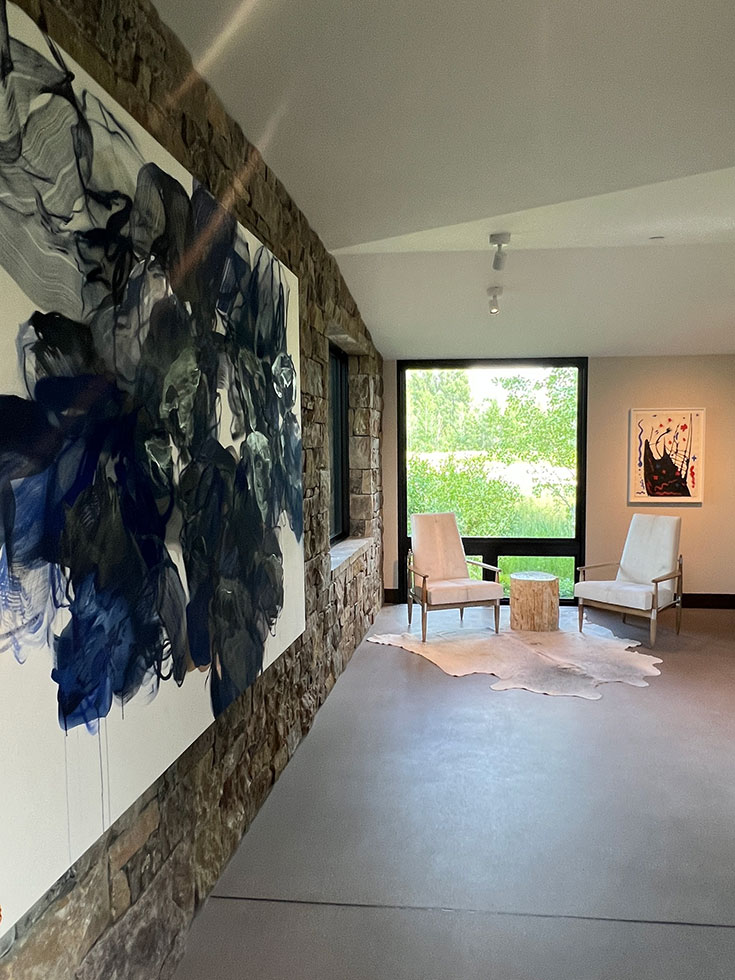
Derek and I have been in our current home since 2014. In those nine years, never once had it occurred to us to move a painting from the place it had initially been hung. Never once until I started my interviews for this article. For weeks now I’ve been wandering my house with artworks in each hand and a measuring tape, pencil, and hammer bulging my pockets. Can the large Tibetan Buddhist thangka painting that had hung at the top of the stairs work in a downstairs hallway? Yes, and, as Brownfield suggested would be the case, it has a different feel in its new home. I didn’t move every single piece of artwork, though. “Clearing off your walls and shelves all at once can be intimidating,” Binger says. “There will be a notable shift if you move a couple of pieces here and there.
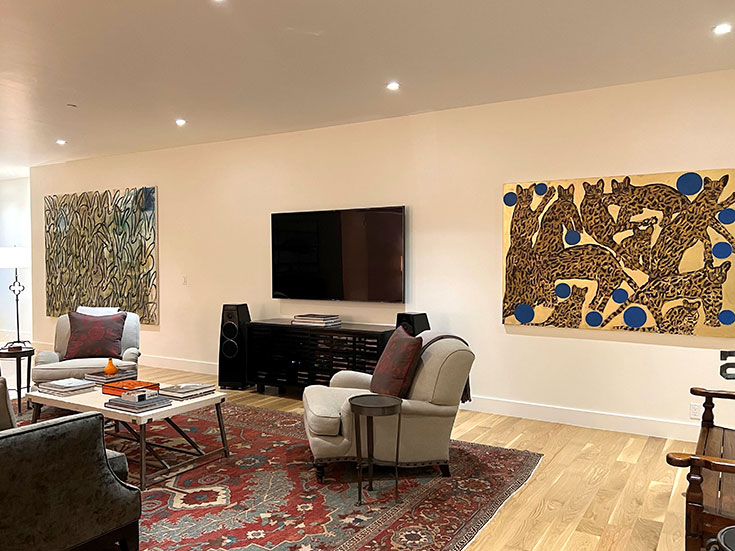
TWO HUNT SLONEM PAINTINGS, (LEFT) AND (RIGHT). COURTESY OF DIEHL GALLERY
DINNER CONVERSATION
My interview style is rigorously informal—more of a meandering conversation than working through a list of prepared questions—but there were three questions I asked everyone interviewed for this article. Two of these questions resulted in six very similar answers. The third question—how do you define art? which, of course, has no right or wrong answer—resulted in answers as wildly divergent as West Live On and Tayloe Piggott Galleries. Art advisor Shari Brownfield’s answer resonated with me the most:
“In my life, I tend to consider art to be objects, moments, or experiences that were specifically created, at the time of creation, with the creator defining it as a work of art. Using this definition, a hummingbird hovering in front of me would not be considered art. Neither would a banana that I taped to a wall because I didn’t have shelves or a bowl to put it in. But, with this definition I do consider Italian artist Maurizio Cattelan’s , a 2019 installation of a banana affixed to a wall with duct tape, art because he intended for it to be art, albeit art of the type that stimulates conversation rather than art that celebrates the inherent aesthetic beauty of bananas and duct tape. Similarly, a urinal on a wall is not “art,” but in 1917, Marcel Duchamps came along and turned one into an artwork, is not different from other urinals, but the artist added a signature to it and placed it in an artistic forum/ arena to be viewed and questioned as an art object, and to stimulate creative discussion.” Now discuss among yourselves.
It’s truly human to love a painting because of the colors, or because it reminds you of a place you’ve visited or experiences you’ve had. Finding a piece ‘perfect’ for your space means little unless you connect with it on a deeper level. Don’t overthink it, and follow your heart.
— Kate Binger, interior designer
ART IS GOOD FOR YOUR HEALTH
In 2019 the World Health Organization, after looking at evidence from more than 3,000 studies, reported that art could play a role in the prevention of illness. In 2018, doctors in Canada began prescribing patients suffering from specific conditions to visit the Montreal Museum of Fine Arts. Looking at art you find pleasant and beautiful can release dopamine, which is known as the “feel-good hormone” because it brings feelings of pleasure; serotonin, a lack of which is thought to play a role in depression; endorphins, which can relieve pain, reduce stress, and improve mood; and even oxytocin, which is often called the “love hormone” because our body also produces it when a sexual partner excites us or we’re falling in love. Now, don’t you want to go and buy artwork you love?
